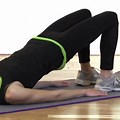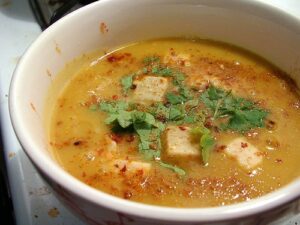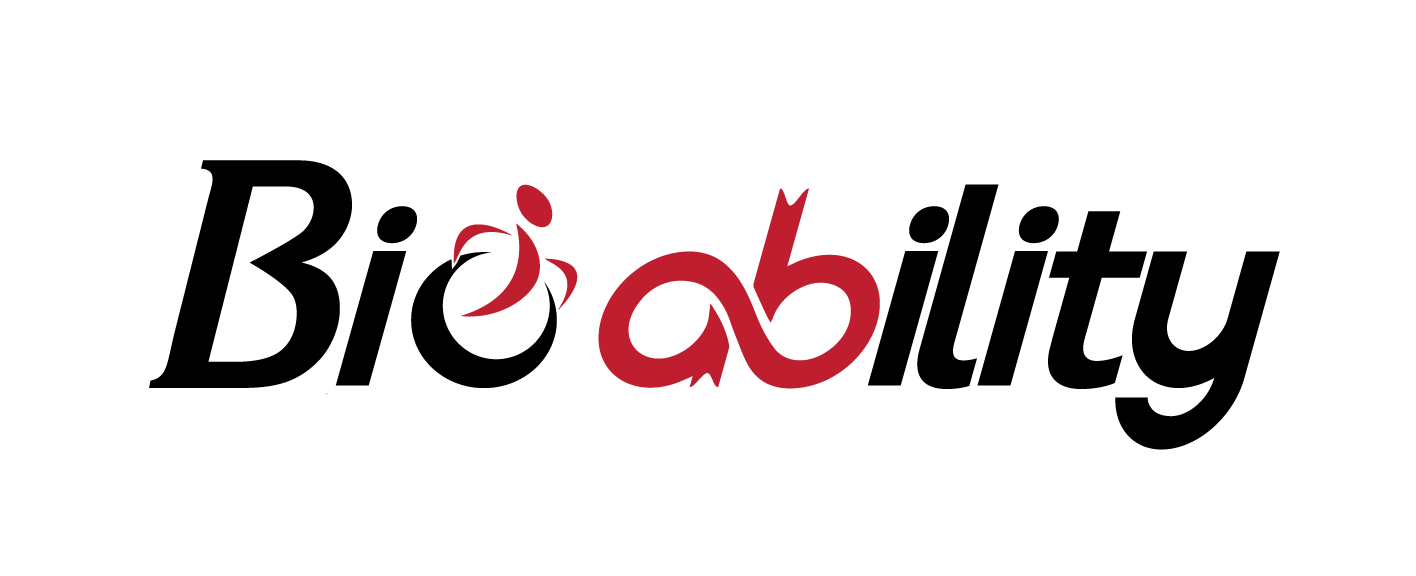September 1, 2025
The Ability Connection
Issue #36
Understanding Limb-Girdle Muscular Dystrophy (LGMD)
Limb-Girdle Muscular Dystrophy (LGMD) Awareness Day is September 30th. LGMD is a group of rare genetic disorders that primarily cause progressive muscle weakness and wasting in the muscles closest to the body’s core—those around the hips and shoulders. These “proximal muscles” are essential for everyday activities like walking, lifting, and climbing stairs, making LGMD a condition that can significantly impact mobility and quality of life.
LGMD encompasses many subtypes, each caused by mutations in specific genes. These subtypes vary in severity, age of onset, and inheritance patterns, with some appearing in childhood and others in adulthood. Common symptoms include difficulty rising from a seated position, frequent falls, and trouble lifting objects. Over time, the condition may also affect respiratory or cardiac muscles in some individuals.
While there is currently no cure for LGMD, advancements in research are offering hope. Treatments focus on managing symptoms and improving quality of life through physical therapy, assistive devices, and, in some cases, medications.
When it comes to exercise, the approach needs to be highly individualized, because certain types of LGMD can make muscles more vulnerable to damage from physical exertion.
- Type Matters: Some LGMD subtypes involve defects in muscle membrane repair. For these, eccentric exercises—like lowering weights or running downhill—can actually worsen muscle damage.
- Avoid Overexertion: If exercise causes pain, cramping, or excessive fatigue, it is a red flag. People with LGMD should set their own limits and stop when they feel strain.
- No Strength Training (in some cases): Weight training may be discouraged, especially if creatine kinase (CK) levels are elevated, indicating muscle damage.
- Include Gentle Movement: Activities like swimming or water-based exercises are often recommended. They reduce strain while promoting mobility and cardiovascular health.
If you or someone you know has LGMD, contact Bio Ability regarding our Physio Support Program.
Understanding Usher Syndrome: A Rare but Resilient Journey
September 19th is Usher Syndrome Awareness Day. Usher Syndrome is a rare genetic condition that profoundly impacts both hearing and vision, often leading to a dual sensory loss. It is caused by mutations in specific genes and is inherited in an autosomal recessive pattern, meaning both parents must carry the gene for a child to be affected. The condition is categorized into three types, each varying in severity and onset of symptoms.
One of the hallmark features of Usher Syndrome is progressive vision loss due to retinitis pigmentosa, a condition that affects peripheral vision and can lead to tunnel vision or complete blindness over time. Hearing loss, present from birth or developing later, ranges from mild to profound, depending on the type. Some individuals may also experience balance issues due to vestibular dysfunction.
For individuals with Usher Syndrome, exercise can be beneficial in several ways:
- Strengthening Balance and Coordination: Exercises that involve bending down, standing or walking with eyes open and then closed, swimming, or walking barefoot on uneven surfaces can help improve balance and coordination.
- Postural Stability: Engaging in physical activities with instructors can systematically enhance postural stability, which is crucial for those with Usher Syndrome.
- Safety Tips: It is important to prioritize safety when exercising, especially in environments where balance may be compromised.
Overall, incorporating appropriate exercises can help improve physical function and safety for individuals with Usher Syndrome. Bio Ability can help. Inquire about our Adaptive Fitness or Physio Support Programs.
What’s happening?
Class Schedule, Changes, Makeups, Payments
School is in full swing and so are the many therapies that our students need to attend. I certainly understand that scheduled may need to change to meet therapies scheduling needs. If you need any changes to your child’s schedule, please contact Dawn on the Bio Ability phone number by calling or texting at least a week before the change is needed. If you require a change from month to month, please notify Dawn before the start of the new month.
If your child is sick or if you are traveling and will not be at your regularly scheduled class, in order to get makeup, please let Dawn know ahead of time and we can schedule the makeup. There will be no makeup with no notice.
Remember that monthly tuition posts on your Sports Engine accounts on the first of each month. Payment is late on the 5th. To avoid a late payment, you are able to put a card on your account for automatic payments.
School Break Camps
We are offering integrated camps at Bio Gymnastics during some school breaks upon request and based on staff availability. Morning sessions are 9-1 and afternoon sessions 12-4 depending on the day and staff availability. Please call or text the Bio Ability number with days and times you are interested so I can be sure there is Bio Ability staff available and then we will schedule. The Bio Ability number is 470-560-3981.
Staff Updates
Welcome to Coach Garrett who joined us in August. Coach Garrett has a degree in Exercise Science; he has a fitness certification through the American College of Sports Medicine and just completed another certification in Autism Fitness. He has been observing and assisting classes the beginning of August and is now taking on some of his own classes. When you see him, please welcome him.
Welcome to coach Audrey! Coach Audrey started with us the end of August. She is fresh out of PT school and competed in gymnastics to level 10 and also coached gymnastics. While she is a PT, she will not provide therapy services for BioAbility as this is not a service we offer. We are looking forward to her taking a lead on improving our Adaptive Gymnastics program by finalizing a gymnastics skills checklist and mentoring other instructors on teaching specific gymnastics skills. She will assist in adding to our staff training program as well as subbing for classes when regular staff are out. She is starting a FT job so until her schedule is finalized and she lets us know her availability, we will not be scheduling any regular classes for coach Audrey.
I am still looking for instructors and would love someone with a behavioral therapist or special education background so if you know anyone, please refer them to dawn.koch@bio-ability.com or to apply online on our website at https://bio-ability.com/job-application/
Exercise of the Month: Bridges
Bridge exercises are beneficial for everyone but especially for special needs children as they help improve core strength, balance, and coordination.
- Core Strengthening: Bridge exercises target the core muscles, which are essential for maintaining balance and performing coordinated movements. Strengthening the core can help children with special needs improve their ability to sit up straight, jump, and perform arm and hand tasks like holding a pencil and controlling scissors.
- Balance and Coordination: Engaging in bridge exercises helps children practice maintaining their balance and developing core strength, which is crucial for overall motor control.
To perform the bridge exercise, follow these steps:
Lie  down on your back with your knees bent and feet flat on the floor, slightly wider than shoulder-width apart.
down on your back with your knees bent and feet flat on the floor, slightly wider than shoulder-width apart.
Tighten your abdominal muscles and push your hips up towards the ceiling, engaging your glutes.
Keep your arms at your sides or slightly bent to stabilize your core.
Avoid overextending your back and ensure your knees do not fall apart.
Hold the position for a few seconds, then slowly lower your hips back down to the floor.
Recipe: Butternut Lentil Stew Butternut Lentil Stew Recipe
Ingredients:
- 1/2 butternut squash, peeled and diced
- 3 tablespoons ext
 ra virgin olive oil
ra virgin olive oil
- 1 yellow onion, chopped
- 2 inches fresh ginger, grated
- 4 cloves garlic, minced or grated
- 2 teaspoons garam masala
- 1 teaspoon turmeric
- 1/2 teaspoon cayenne pepper, more or less to taste
- 3 cups water (or vegetable broth)
- 1/3 cup fresh cilantro, chopped, plus more for serving
- 1/2 teaspoon Kosher salt and black pepper
- 1 (14 ounces) can coconut milk
- 3 cups chopped kale
- 1 small can cooked lentils
Directions:
- Heat the olive oil in a large pot or Dutch oven over medium heat. Add the chopped onion and cook 5 minutes until soft. Add the ginger, garlic, and diced butternut squash and cook until fragrant, about 2 minutes. Stir in the garam masala, turmeric, and cayenne and cook for one minute more.
- Add 3 cups of water (or low-sodium vegetable broth). Season with salt and pepper and bring the stew to a simmer. Cover and simmer for 15-20 minutes, until the butternut is tender.
- Stir in the coconut milk, lentils, and chopped kale, cook for 5 minutes. Remove the stew from the heat and add the fresh cilantro.
Nutrition Facts
UNKNOWN
